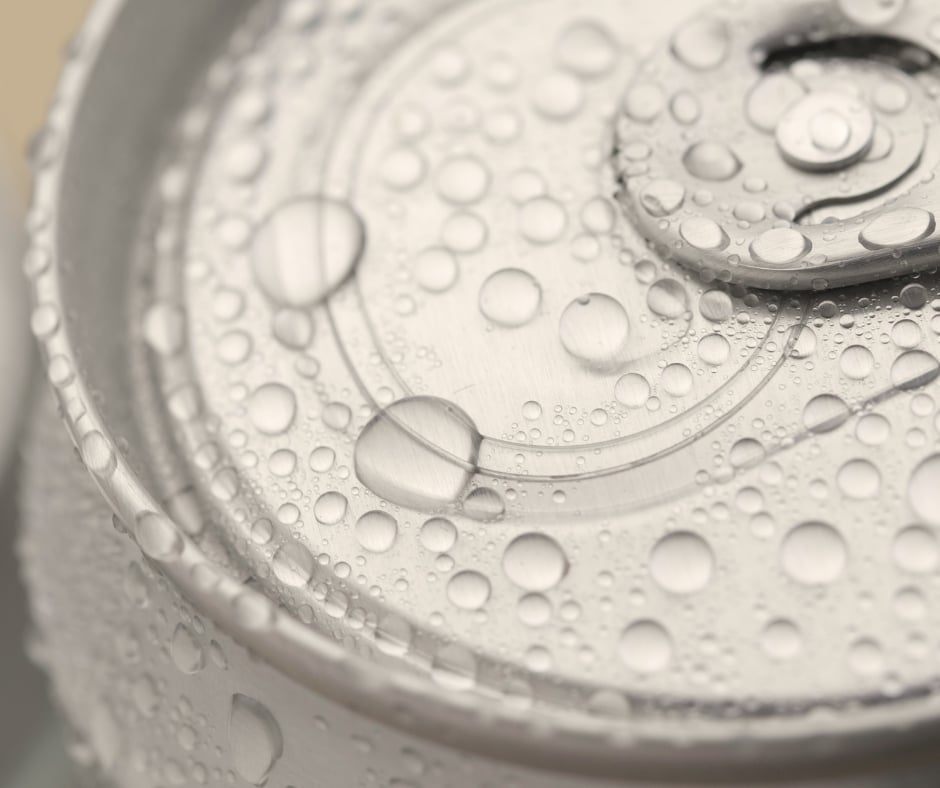
Search for topics or resources
Enter your search below and hit enter or click the search icon.

Noticed fog or water beads on your brand-new windows and worried something’s wrong? You’re not alone. Condensation can be surprising (and a little frustrating) right after an upgrade. The good news is that it usually means your high-efficiency glass is doing its job by separating indoor comfort from outdoor weather. In this guide, we’ll break down why condensation happens (inside vs. outside), when it’s normal, when it needs attention, and simple steps to manage indoor humidity so your views stay clear.
Think of your window like a cold soda can on a humid day. With old, leaky windows, a little indoor warmth slipped through and kept the glass closer to the 70°F inside air, so it didn’t “sweat.” With new energy-efficient windows, that warmth stays indoors. The outside pane cools down to the overnight low (around 60°F), and when morning humidity hits that cooler surface, it beads up just like on a can until the sun warms the glass back up.

Exterior condensation can be picky because every window “lives” in a slightly different micro-climate. A big picture window on the north side (larger surface, less morning sun) may fog while a smaller east-facing bedroom window clears quickly after sunrise. Windows shaded by a deep porch roof or neighboring trees stay cooler longer and collect moisture, but the same model in full sun won’t.
Landscaping matters too: a window over dense shrubs, wet mulch, or an active sprinkler zone sees higher local humidity and more condensation than one above dry stone or turf. Even details like a nearby bathroom vent, exterior screens (which slightly cool and trap moisture), or a dark wall color that warms the surrounding air can tip the balance. So two identical windows on the same wall can behave differently simply because of the sun angle, shade, and what’s right below them.
Condensation on the inside is less common, but still happens. Excessive humidity is often the primary cause of interior window condensation. As the outside temperature drops, the temperature of the window glass also drops. When moist air comes in contact with the cold glass pane, the moisture condenses and forms water droplets.
To help prevent condensation inside your windows, reduce indoor humidity. Here are a few ways to do that:
Pro Tip: During the winter months, aim for a humidity level of 30 to 35 percent in your home. Some thermostats measure humidity. If yours doesn’t, you can buy an inexpensive tool called a hygrometer to measure humidity.

While condensation forming on a brand-new window may be a nuisance, it is not a sign of failure; rather, it indicates that your new windows are doing their job. At Joyce, windows are what we do: precision-engineered frames, energy-smart glass packages, and installation standards that keep units square, sealed, and performing season after season.
Our consultants can help diagnose moisture and airflow issues, recommend the proper ventilation and glass options for your climate, and stand behind the work with clear warranties and responsive service. If you’re seeing condensation and want a pro’s eye on it, we’ll pinpoint the cause and tailor a solution. So your windows deliver the clarity, comfort, and efficiency you invested in.
Shari Rogala is the Marketing Content Manager at Joyce Windows, Sunrooms & Baths, where she brings near two decades of experience in customer-first marketing strategy and home improvement communications. With a passion for helping homeowners make confident, informed decisions, Shari specializes in creating clear, educational content that cuts through industry jargon and high-pressure sales tactics.